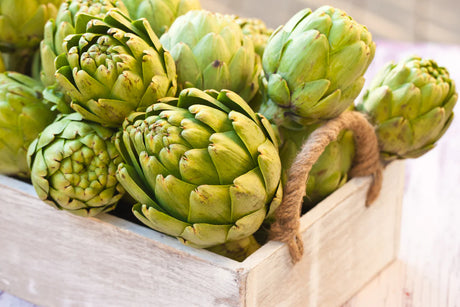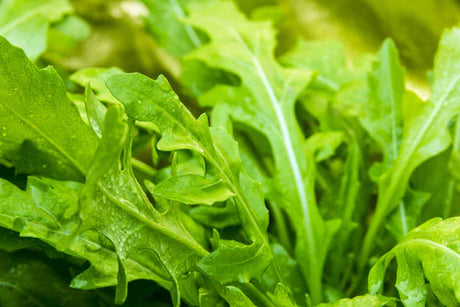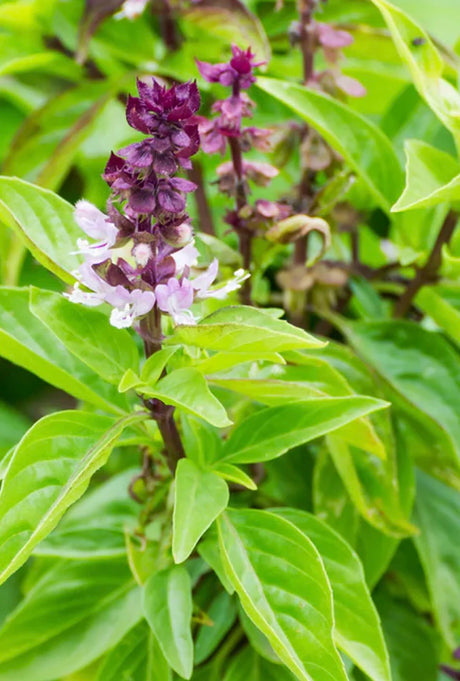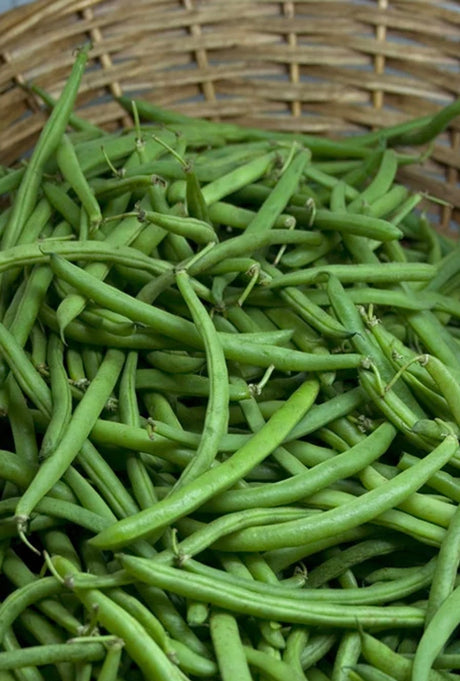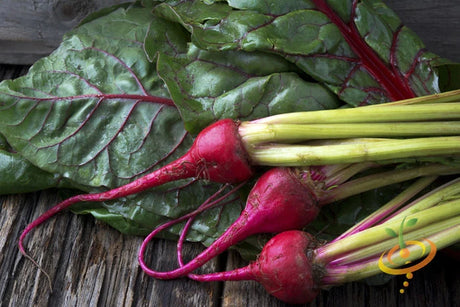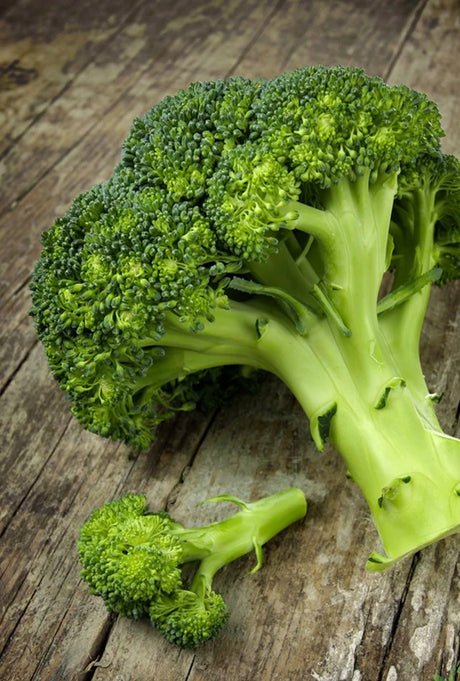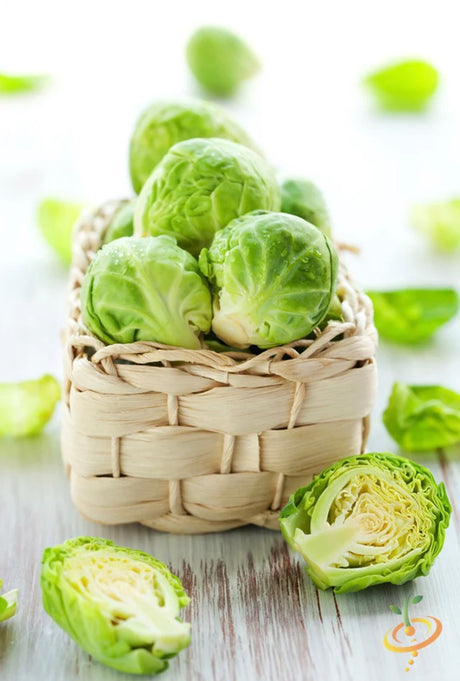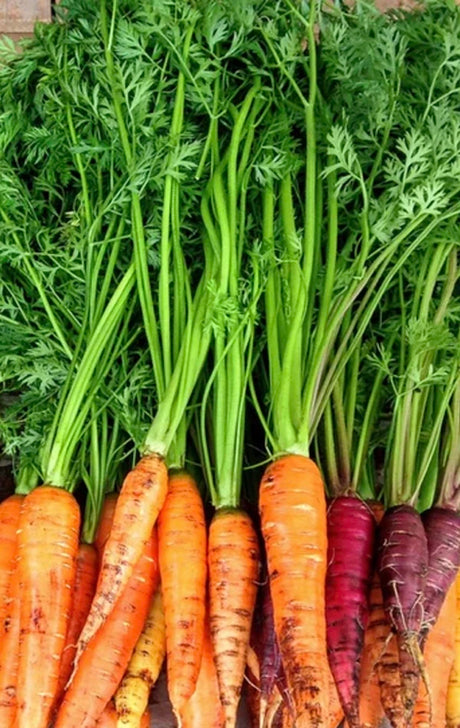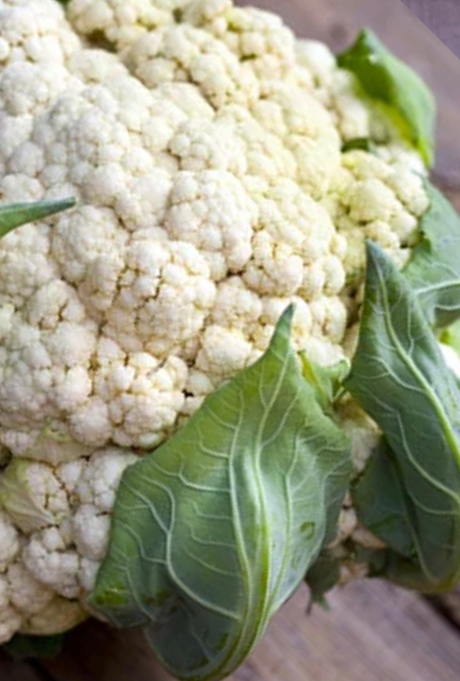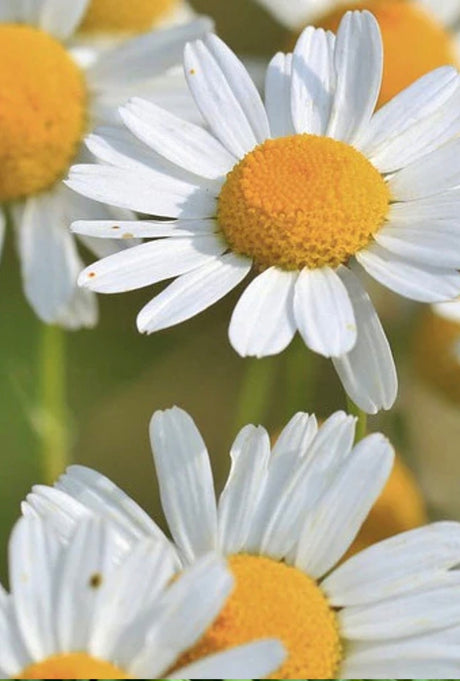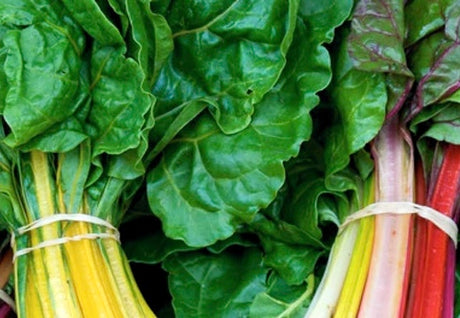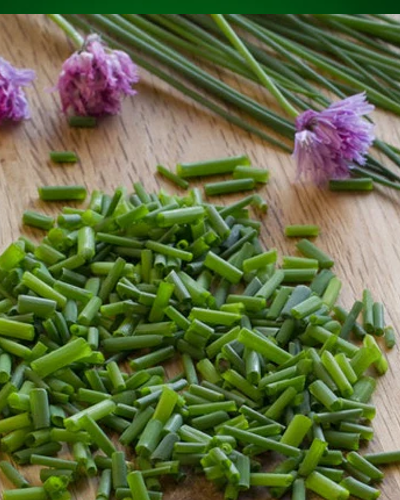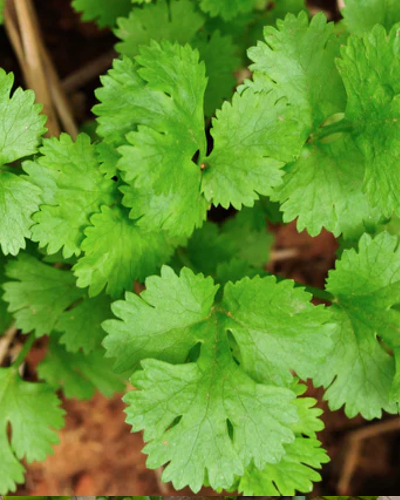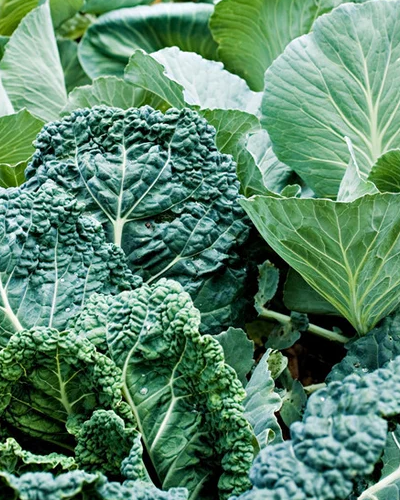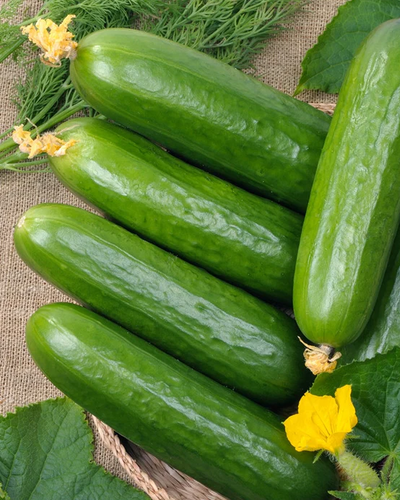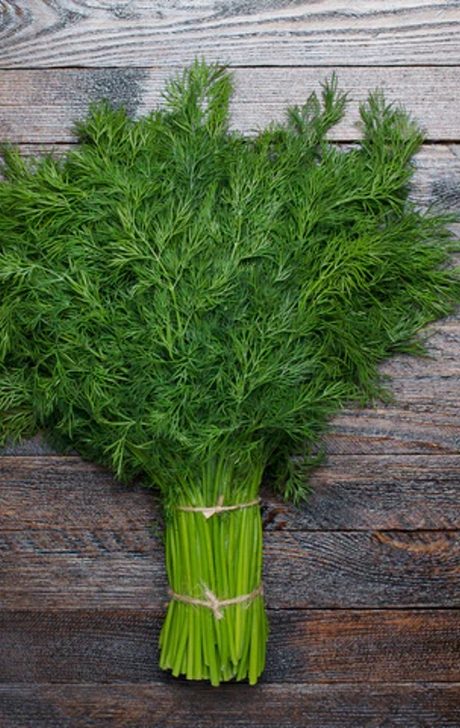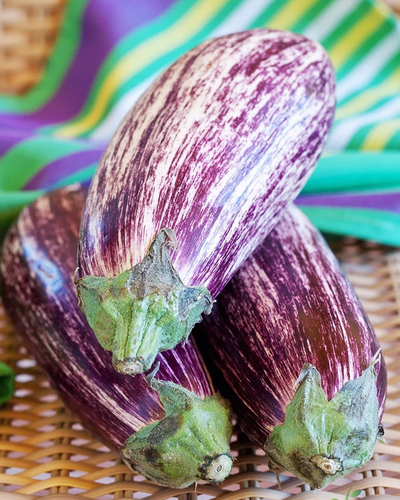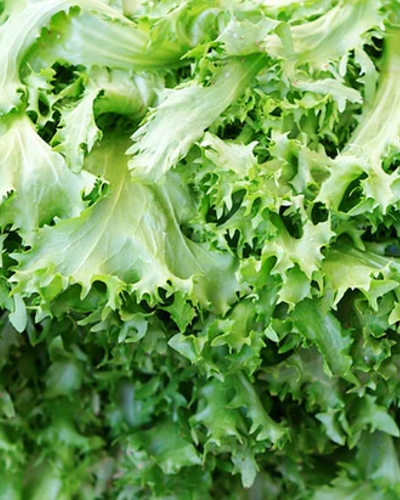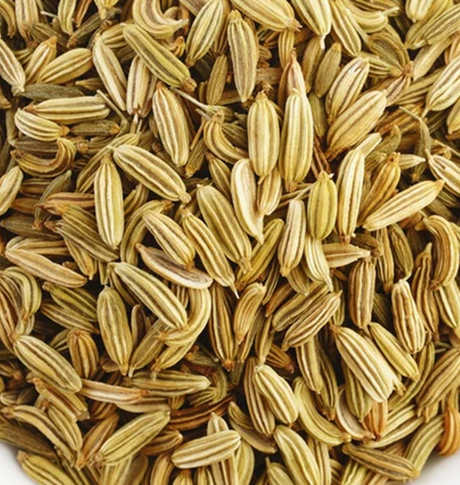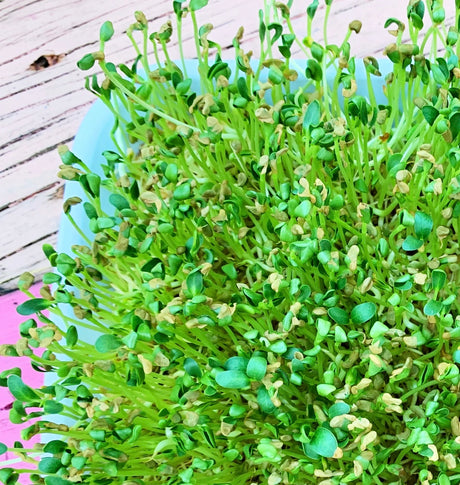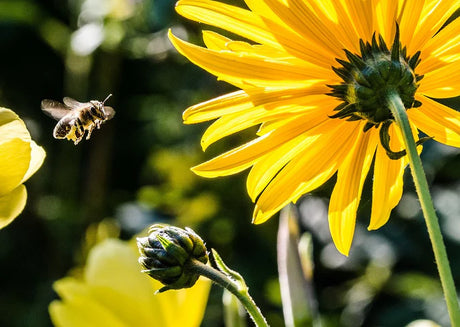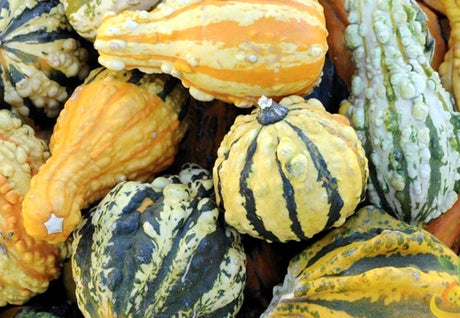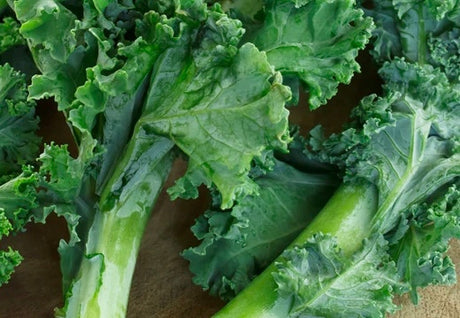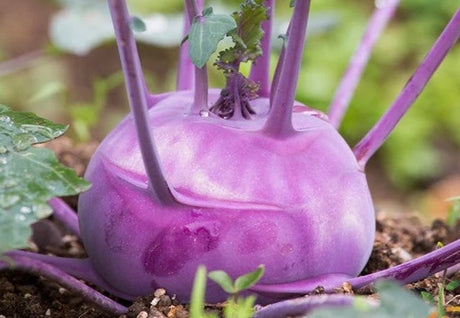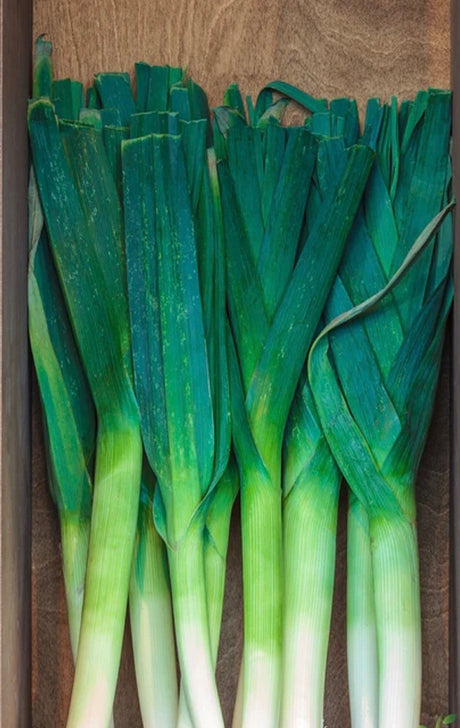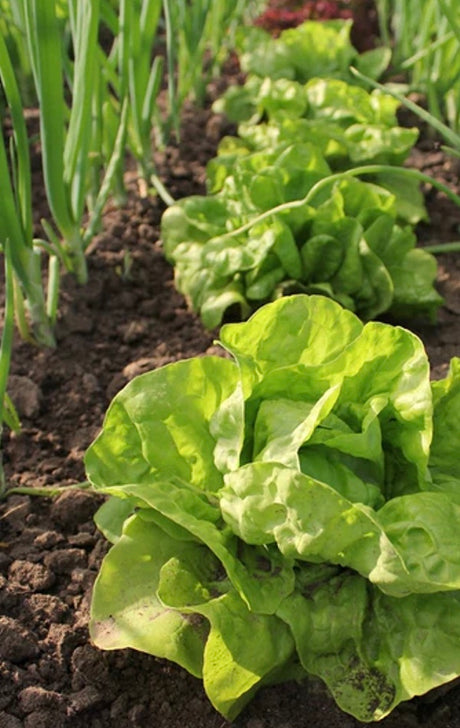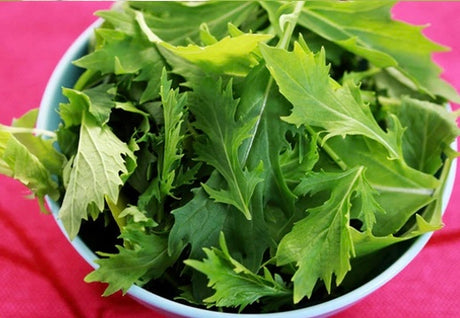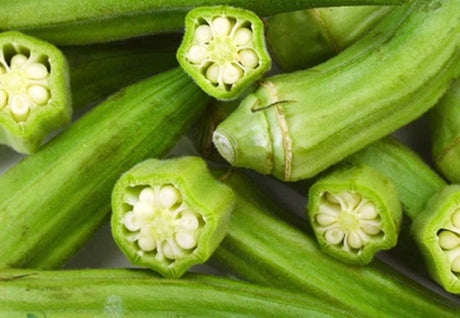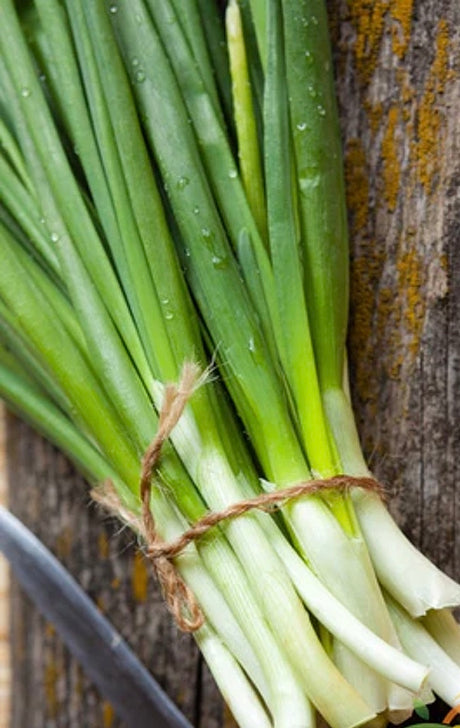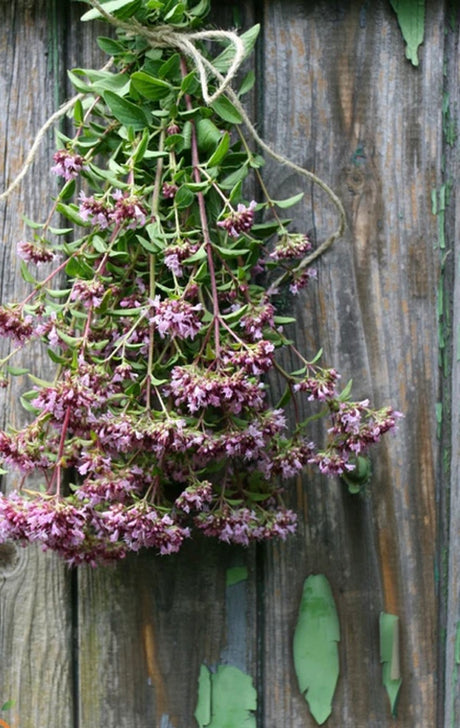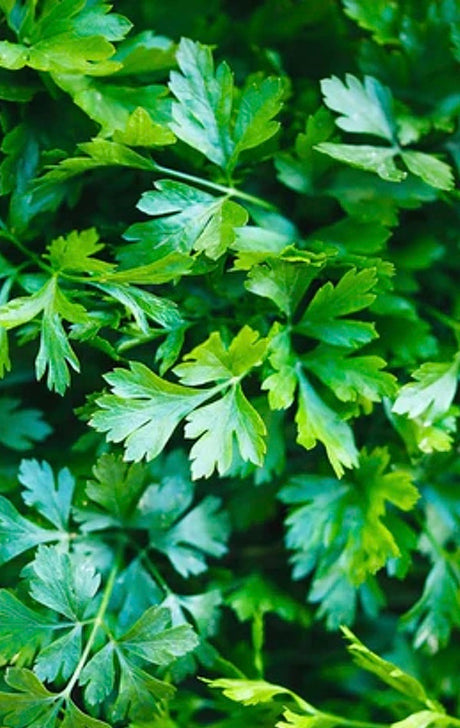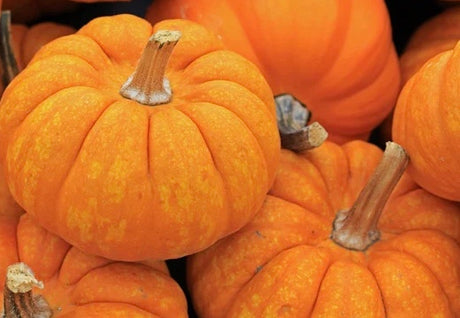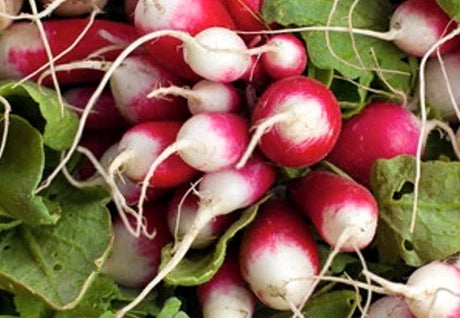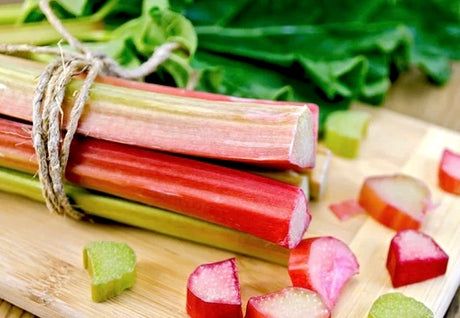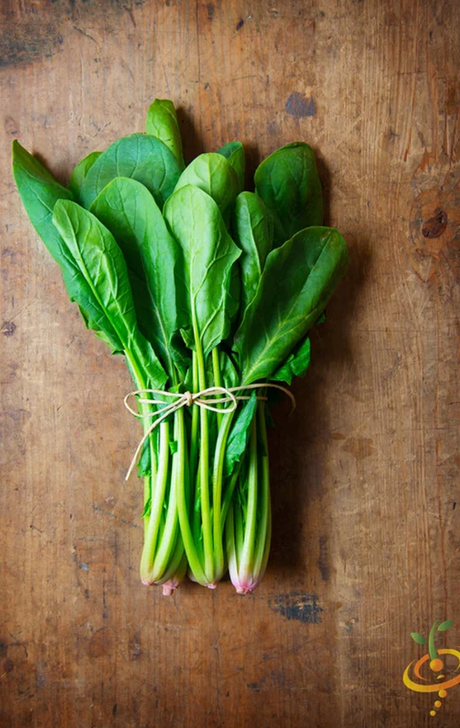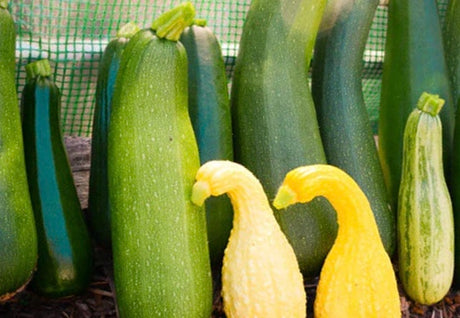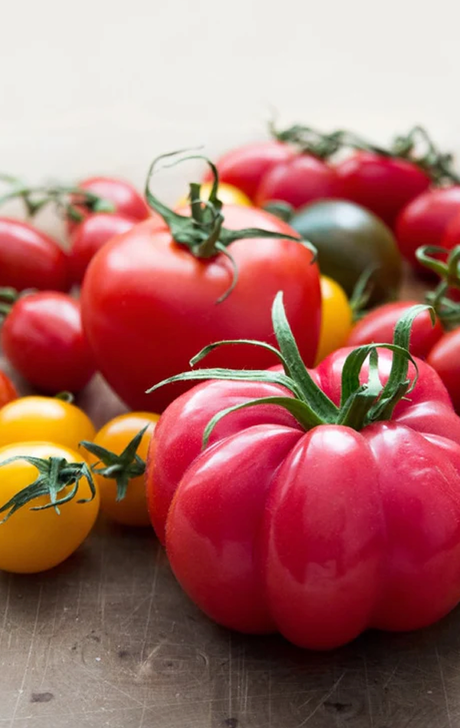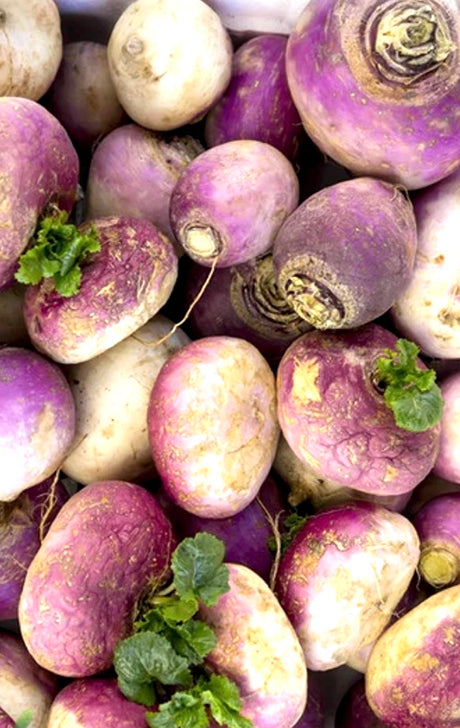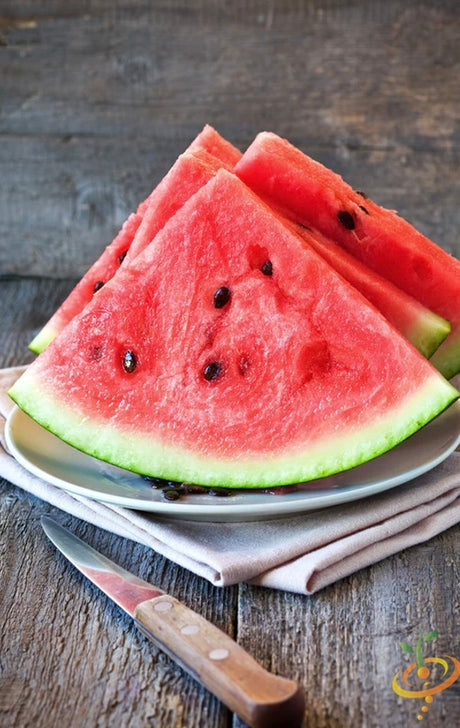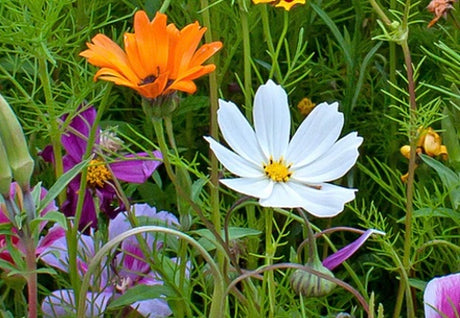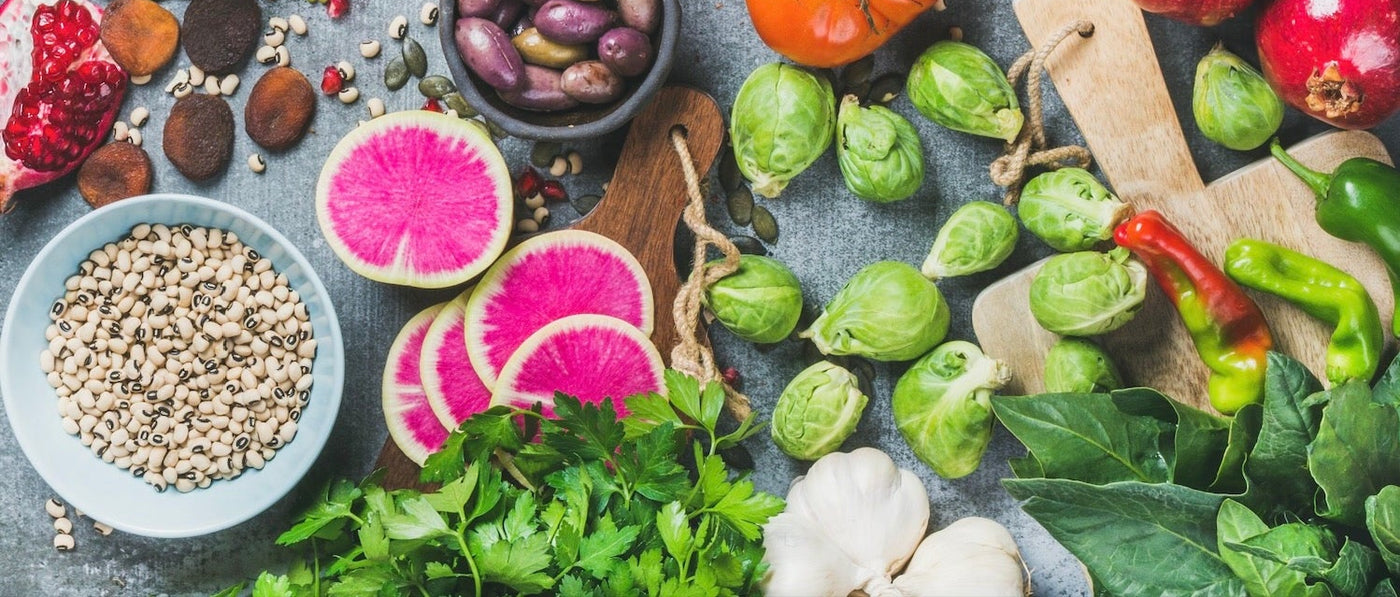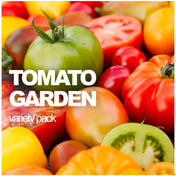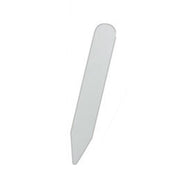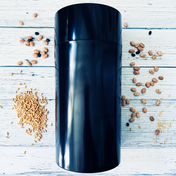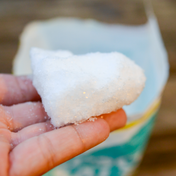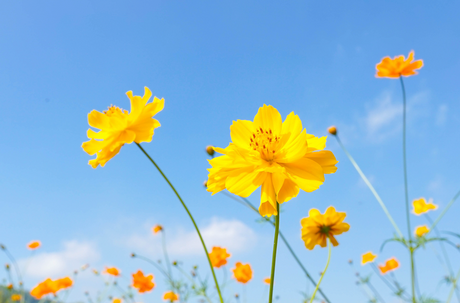It's a Boy - Forget-Me-Not (Myosotis oblongata) A delicate woodland flower, the symbol of true love, meaning 'remember me forever'. When in bloom, forget-me-nots bear clusters of flowers that unfurl as the buds open. They will bloom the first year. To promote flowering, pinch off the spent flowers. Includes: seed, reusable recycled US steel tin, directions. Tin 2" diam.
Wildflowers - Righteous Red Scatter Garden Seed Mix
From $499 USDUnit price /UnavailableDescription

Includes a mix of 10 of the most vibrant and beautiful red colored flower varieties. Scatter this mix in your garden and enjoy a beautiful assortment of red flowers!
Wildflower establishment requires some important steps:- Site selection/preparation: It's important to address competition from weeds: pull, till, or use organic herbicides. If planting in the spring/summer you can wait for weeds to germinate, control and then plant the wildflower seeds.
- Seeding: You will want to have good seed to soil contact, broadcasting by hand is a good approach on small plot, may want to mix with an inert carrier, sand or other. Raking in and covering with soil 2-3 times seed thickness.
- Watering: During establishment for the first month, can be from rain in spring or supplement with irrigation.
- Timing: The best time to plant is in spring to early summer and even again in late fall.
This mix includes all of the following seed varieties:GENUS/SPECIES
COMMON NAME

Centaurea cyanus
Cornflower Tall Red

Eschscholzia californica
Mikado

Linum rubrum
Scarlet Flax

Lychinis chalcedonica
Maltese Cross

Papaver rhoeas
Red Corn Poppy

Papaver rhoeas
Shirley Single Mix

Phlox drummondii
Annual Red

Tagetes erecta
French Marigold

Trifolium incarnatum
Crimson Clover

Zinnia elegens
Zinnia Red
Wildflowers - Poppy Scatter Garden Seed Mix
From $499 USDUnit price /UnavailableDescription

Includes a mix of 6 of the most vibrant and beautiful Poppy flower varieties. Scatter this mix in your garden and enjoy a beautiful assortment of Poppy flowers!
Wildflower establishment requires some important steps:- Site selection/preparation: It's important to address competition from weeds: pull, till, or use organic herbicides. If planting in the spring/summer you can wait for weeds to germinate, control and then plant the wildflower seeds.
- Seeding: You will want to have good seed to soil contact, broadcasting by hand is a good approach on small plot, may want to mix with an inert carrier, sand or other. Raking in and covering with soil 2-3 times seed thickness.
- Watering: During establishment for the first month, can be from rain in spring or supplement with irrigation.
- Timing: The best time to plant is in spring to early summer and even again in late fall.
This mix includes all of the following seed varieties:GENUS/SPECIES
COMMON NAME

Eschscholzia californica
California Poppy Orange

Eschscholzia californica
California Poppy White

Eschscholzia californica
Mikado

Eschscholzia californica
Mission Bells

Papaver rhoeas
Red Corn Poppy

Papaver rhoeas
Shirley Mix Poppy
Wildflowers - Forever Pink Scatter Garden Seed Mix
From $499 USDUnit price /UnavailableDescription
 Includes a mix of 9 of the most vibrant and beautiful pink flower varieties. Scatter this mix in your garden and enjoy a beautiful assortment of pink flowers!Wildflower establishment requires some important steps:- Site selection/preparation: It's important to address competition from weeds: pull, till, or use organic herbicides. If planting in the spring/summer you can wait for weeds to germinate, control and then plant the wildflower seeds.
Includes a mix of 9 of the most vibrant and beautiful pink flower varieties. Scatter this mix in your garden and enjoy a beautiful assortment of pink flowers!Wildflower establishment requires some important steps:- Site selection/preparation: It's important to address competition from weeds: pull, till, or use organic herbicides. If planting in the spring/summer you can wait for weeds to germinate, control and then plant the wildflower seeds.
- Seeding: You will want to have good seed to soil contact, broadcasting by hand is a good approach on small plot, may want to mix with an inert carrier, sand or other. Raking in and covering with soil 2-3 times seed thickness.
- Watering: During establishment for the first month, can be from rain in spring or supplement with irrigation.
- Timing: The best time to plant is in spring to early summer and even again in late fall.
This mix includes all of the following seed varieties:GENUS/SPECIES
COMMON NAME

Centaurea cyanus
Cornflower Tall Pink

Clarkia amoena
Godetia Semi Dwf Mix

Cosmos bippinatus
Pinkie Dwarf

Hesperis matronalis
Purple Dame's Rocket

Iberis umbellata
Dwf. Candytuft Fairy Bqt.

Lavatera trimestris
Tree Mallow

Monarda citriodora
Lemon Mint

Silene armeria
Catchfly

Silene pendula
Nodding Catchfly
Wildflowers - Exotic Mountain Scatter Garden Seed Mix
From $499 USDUnit price /UnavailableDescription
 Includes a mix of 17 of the most vibrant and beautiful flower varieties you've ever seen. Scatter this mix in your garden. Specifically for elevations above 7,000 feet in western continental U.S.Wildflower establishment requires some important steps:- Site selection/preparation: It's important to address competition from weeds: pull, till, or use organic herbicides. If planting in the spring/summer you can wait for weeds to germinate, control and then plant the wildflower seeds.
Includes a mix of 17 of the most vibrant and beautiful flower varieties you've ever seen. Scatter this mix in your garden. Specifically for elevations above 7,000 feet in western continental U.S.Wildflower establishment requires some important steps:- Site selection/preparation: It's important to address competition from weeds: pull, till, or use organic herbicides. If planting in the spring/summer you can wait for weeds to germinate, control and then plant the wildflower seeds.
- Seeding: You will want to have good seed to soil contact, broadcasting by hand is a good approach on small plot, may want to mix with an inert carrier, sand or other. Raking in and covering with soil 2-3 times seed thickness.
- Watering: During establishment for the first month, can be from rain in spring or supplement with irrigation.
- Timing: The best time to plant is in spring to early summer and even again in late fall.
This mix includes all of the following seed varieties:GENUS/SPECIES
COMMON NAME
HEIGHT
TYPE
COLOR
Aquilegia caerulea
Columbine
24"-36"
P
Y, R, V, B

Centaurea cyanus
Cornflower
12"-36"
A
B or mix

Cheiranthus allionii
Siberian Wallflower
16"-24"
B/P
O

Chrysanthemum maximum
Shasta Daisy
16"-24"
P
W

Coreopsis tinctoria
Plains Coreopsis
12"-36"
A
Y, M

Dianthus barbatus
Sweet William
12"-24"
P
W,P,R

Dimorphotheca aurantiaca
African Daisy
8"-16"
A
O,S,W

Eschscholtzia californica
California Poppy
12"-18"
A
Y,O

Gaillardia aristata
Perennial Gaillardia
18"-30"
PA
Y,R

Gypsophila elegans
Annual Baby's Breath
8"-18"
P
W

Linum lewisii
Blue Flax
18"-30"
B/P
B

Lobularia maritima
Sweet Alyssum
8"-16"
P
W

Oenothera lamarckiana
Evening Primrose
24"-60"
B/P
Y

Penstemon strictus
Rocky Mtn. Penstemon
24"-36"
P
B

Ratibida columnifera
Prairie Coneflower
12"-36"
B/P
R,Y

Rudbeckia hirta
Black Eyed Susan
12"-36"
A/B/P
Y

Silene armeria
Catchfly
16"-22"
A
P
A-Annual
52%
Y- YELLOW
P-Perennial
24%
R-Red
B-Biennal
24%
V-Violet
B-Blue
W-White
M-Maroon
O-Orange
P-Purple
S-Salmon
Wildflowers - Bee Scatter Garden Seed Mix
From $499 USDUnit price /UnavailableDescription
Plant this mix to attract bees and other beneficial pollinators. =)

Wildflower establishment requires some important steps:- Site selection/preparation: It's important to address competition from weeds: pull, till, or use organic herbicides. If planting in the spring/summer you can wait for weeds to germinate, control and then plant the wildflower seeds.
- Seeding: You will want to have good seed to soil contact, broadcasting by hand is a good approach on small plot, may want to mix with an inert carrier, sand or other. Raking in and covering with soil 2-3 times seed thickness.
- Watering: During establishment for the first month, can be from rain in spring or supplement with irrigation.
- Timing: The best time to plant is in spring to early summer and even again in late fall.Wildflowers - All Perennial Scatter Garden Seed Mix
From $499 USDUnit price /UnavailableDescription
 Includes a mix of 16 popular perennial flower varieties and colors. Scatter this mix of seeds in your garden and enjoy a beautiful assortment of flowers for multiple years.
Includes a mix of 16 popular perennial flower varieties and colors. Scatter this mix of seeds in your garden and enjoy a beautiful assortment of flowers for multiple years.A perennial plant or simply perennial is a plant that lives for more than two years. The term is often used to differentiate a plant from shorter-lived annuals and biennials. Wikipedia
Wildflower establishment requires some important steps:- Site selection/preparation: It's important to address competition from weeds: pull, till, or use organic herbicides. If planting in the spring/summer you can wait for weeds to germinate, control and then plant the wildflower seeds.
- Seeding: You will want to have good seed to soil contact, broadcasting by hand is a good approach on small plot, may want to mix with an inert carrier, sand or other. Raking in and covering with soil 2-3 times seed thickness.
- Watering: During establishment for the first month, can be from rain in spring or supplement with irrigation.
- Timing: The best time to plant is in spring to early summer and even again in late fall.
This mix includes all of the following seed varieties:GENUS/SPECIES
COMMON NAME
HEIGHT
COLOR

Achillea millefolium
White Yarrow
24-36"
W

Aquilegia vulgaris
Columbine
10-18"
R/V/B

Aster novae angliae
New England Aster
24-36"
B/P/W/P

Cheiranthus allionii
Siberian Wallflower
10-18"
O

Chrysanthemum maximum
Shasta Daisy
16-24"
W

Coreopsis lanceolata Dwarf
Lance-Leaf Coreopsis
18-36"
Y

Dianthus barbatus
Sweet William
12-24"
W/P/R

Echinacea purpurea
Purple Coneflower
24-36"
P

Gaillardia aristata
Blanketflower
18-30"
Y/R

Liatris spicata
Gayfeather
24-48"
P

Linum lewisii
Blue Flax
18-30"
B

Lupinus perennis
Lupine
12-36"
B

Oenothera missouriensis
Dwarf Evening Primrose
8-12"
Y

Ratibida columnifera
Mexican Hat
12-36"
R/Y

Ratibida columnifera
Prairie Coneflower
12-36"
Y

Rudbeckia hirta
Black Eyed Susan
18-30"
Y
W-White
R-Red
V-Violet
B-Blue
Y-Yellow
O-Orange
P-Purple
Wildflowers - Partial Shade Scatter Garden Seed Mix
From $499 USDUnit price /UnavailableDescription
 Plant this mix in an area of your garden that gets partial shade. Includes a mix of 15 different shade tolerant (less than 6 hours of sunlight per day) flower varieties.
Plant this mix in an area of your garden that gets partial shade. Includes a mix of 15 different shade tolerant (less than 6 hours of sunlight per day) flower varieties.
Wildflower establishment requires some important steps:- Site selection/preparation: It's important to address competition from weeds: pull, till, or use organic herbicides. If planting in the spring/summer you can wait for weeds to germinate, control and then plant the wildflower seeds.
- Seeding: You will want to have good seed to soil contact, broadcasting by hand is a good approach on small plot, may want to mix with an inert carrier, sand or other. Raking in and covering with soil 2-3 times seed thickness.
- Watering: During establishment for the first month, can be from rain in spring or supplement with irrigation.
- Timing: The best time to plant is in spring to early summer and even again in late fall.This mix includes the following:
GENUS/SPECIES
COMMON NAME
TYPE
HEIGHT

Aquilegia vulgaris
Garden Columbine
P
10-18"

Centaurea cyanus
Bachelor's Button
A
12-36"
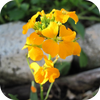
Cheiranthus allionii
Siberian Wallflower
B/P
10-18"
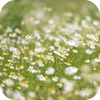
Chrysanthemum maximum
Daisy Chrysanthemum
P
16-24"

Clarkia elegans
Clarkia Mix
A
18-30"

Coreopsis lanceolata
Lance Leaf Coreopsis
P
18-36"

Coreopsis tinctoria
Plains Coreopsis
A
12-36"
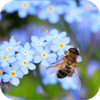
Cynoglossum amabile
Chinese Forget-Me-Not
A/B
18-24"
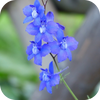
Delphinium consolida
Rocket Larkspur
A
12-36"

Dianthus barbatus
Sweet William
P
12-24"

Digitalis purpurea
Common Foxglove
B/P
24-48"

Gypsophila elegans
Annual Baby's Breath
A
8-18"

Lavatera trimestris
Rose Mallow
A
24-48"

Nemophila menziesii
Baby Blue Eyes
A
4-12"

Papaver rhoeas
Shirley Poppy
A
12-30"
A-Annual
59%
P-Perennial
15%
B-Biennial
26%
Wildflowers - Low Grow Scatter Garden Seed Mix
From $499 USDUnit price /UnavailableDescription
 Includes a mix of 17 different beautiful flower varieties. A mostly annual flower seed mix that blooms quickly and stays below knee high. Great for containers and edges.
Includes a mix of 17 different beautiful flower varieties. A mostly annual flower seed mix that blooms quickly and stays below knee high. Great for containers and edges.
Wildflower establishment requires some important steps:- Site selection/preparation: It's important to address competition from weeds: pull, till, or use organic herbicides. If planting in the spring/summer you can wait for weeds to germinate, control and then plant the wildflower seeds.
- Seeding: You will want to have good seed to soil contact, broadcasting by hand is a good approach on small plot, may want to mix with an inert carrier, sand or other. Raking in and covering with soil 2-3 times seed thickness.
- Watering: During establishment for the first month, can be from rain in spring or supplement with irrigation.
- Timing: The best time to plant is in spring to early summer and even again in late fall.This mix includes the following:
GENUS/SPECIES
COMMON NAME
TYPE
HEIGHT
COLOR

Centaurea cyanus
Bachelor Button dwf.
A
12 to 36
Blue or Mix

Cheiranthus allionii
Siberian Wallflower
B/P
10 to 18
Orange

Clarkia amoena
Farewell to Spring dwf.
A
8 to 14
Pink/White

Collinsia heterophyla
Chinese Houses
A
12 to 24
White-Violet

Coreopsis lanceolata
Lance Leaf Coreopsis dwf.
P
18 to 36
Yellow

Coreopsis tinctoria
Plains Coreopsis dwf.
A
12 to 36
Yellow-Maroon

Cynoglossum firmament
Chinese Forget Me Not
A/B
18 to 24
Blue

Dianthus barbatus
Sweet William
P
12 to 24
White/Pink/Red

Dimorphotheca aurantiaca
African Daisy
A
8 to 16
Orange/Salmon/White

Eschscholtzia californica
California Poppy
TP
12 to 18
Yellow/Orange

Gypsophila elegans
Baby's Breath
A
8 to 18
White

Iberis umbellata
Candytuft
A
12 to 18
White/Pink/Violet

Linum lewisii
Blue Flax
P
18 to 30
Blue

Lobularia maritima
Sweet Alyssum
TP
8 to 16
White

Nemophila menziesii
Baby Blue Eyes
A
4 to 12
Blue

Phacelia campanularia
California Bluebells
A
8 to 20
Blue

Silene armeria
Catchfly
A/B
16 to 22
Pink
A=ANNUAL
59%
P=PERENNIAL
14%
TP= TENDER PERENNIALS
13%
B=BIANNUAL
14%
Wildflowers - Dryland Scatter Garden Seed Mix
From $499 USDUnit price /UnavailableDescription
 Includes a mix of 21 different beautiful flower varieties. Cover dry spaces with drought tolerant wildflowers! Mix includes annuals and perennials. Easy to grow and require little maintenance
Includes a mix of 21 different beautiful flower varieties. Cover dry spaces with drought tolerant wildflowers! Mix includes annuals and perennials. Easy to grow and require little maintenance
Wildflower establishment requires some important steps:- Site selection/preparation: It's important to address competition from weeds: pull, till, or use organic herbicides. If planting in the spring/summer you can wait for weeds to germinate, control and then plant the wildflower seeds.
- Seeding: You will want to have good seed to soil contact, broadcasting by hand is a good approach on small plot, may want to mix with an inert carrier, sand or other. Raking in and covering with soil 2-3 times seed thickness.
- Watering: During establishment for the first month, can be from rain in spring or supplement with irrigation.
- Timing: The best time to plant is in spring to early summer and even again in late fall.This mix includes the following:
Genus/Species
Common Name
HEIGHT
TYPE
COLOR

Centaurea cyanus
Cornflower
36"
A
Blue

Cheiranthus allionii
Siberian Wallflower
18"
B
Orange

Chrysanthemum maximum
Shasta Daisy
36"
P
White
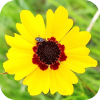
Coreopsis tinctoria
Plains Coreopsis
36"
A
Yellow/Red

Dianthus barbatus
Sweet William
24"
B
Mix

Dimorphotheca auranantiaca
African Daisy
12"
A
Yellow

Echinacea purpurea
Purple Coneflower
36"
P
Purple

Eschscholtzia californica
California Poppy
12"
A
Orange

Gaillardia aristata
Perennial Gaillardia
24"
P
Yellow/Red

Gaillardia pulchella
Annual Gaillardia
24"
A
Yellow/Red

Gypsophila elegans
Annual Baby's Breath
24"
A
White

Linaria maroccana
Spurred Snapdragon
24"
A
Mix

Linum lewisii
Blue Flax
24"
P
Blue

Lobularia maritima
Sweet Alyssum
10"
A
White

Oenothera lamarckiana
Evening Primrose
36"
B
Yellow

Papaver rhoeas
Corn Poppy
24"
A
Red

Penstemon strictus
Rocky Mtn. Penstemon
36"
P
Blue

Ratibida columnifera
Prairie Coneflower
24"
P
Red

Rudbeckia hirta
Black Eyed Susan
36"
A/B/P
Gold

Rudbeckia hirta
Gloriosa Daisy
36"
A/B/P
Yellow/Red

Silene armeria
Catchfly
18"
A
Pink
ANNUAL
64%
BI-ANNUAL
11%
PERENNIAL
25%
Wildflowers - Moist Area Scatter Garden Seed Mix
From $499 USDUnit price /UnavailableDescription
 Includes a mix of 16 different beautiful flower varieties. Cover moist spaces with moist soi tolerant wildflowers! Mix includes annuals and perennials. Easy to grow and require little maintenance.
Includes a mix of 16 different beautiful flower varieties. Cover moist spaces with moist soi tolerant wildflowers! Mix includes annuals and perennials. Easy to grow and require little maintenance.
Wildflower establishment requires some important steps:- Site selection/preparation: It's important to address competition from weeds: pull, till, or use organic herbicides. If planting in the spring/summer you can wait for weeds to germinate, control and then plant the wildflower seeds.
- Seeding: You will want to have good seed to soil contact, broadcasting by hand is a good approach on small plot, may want to mix with an inert carrier, sand or other. Raking in and covering with soil 2-3 times seed thickness.
- Watering: During establishment for the first month, can be from rain in spring or supplement with irrigation.
- Timing: The best time to plant is in spring to early summer and even again in late fall.This mix includes the following:
GENUS/SPECIES
COMMON NAME
TYPE
HEIGHT
COLOR

Aquilegia vulgaris
Dwarf European Columbine
P
10 to 18
Red/Violet/Blue

Centaurea cyanus
Bachelor's Button
A
12 to 36
Blue or Mix

Cheiranthus allionii
Siberian Wallflower
B/P
10 to 18
Orange

Chrysanthemum maximum
Daisy Chrysanthemum
B/P
16 to 24
White

Clarkia elegans
Clarkia Mix
A
18 to 30
Pink/Lavender

Coreopsis lanceolata
Lance Leaf Coreopsis
P
18 to 36
Yellow

Coreopsis tinctoria
Plains Coreopsis
A
12 to 36
Yellow-Maroon

Collinsia heterophylla
Chinese Houses
A
12 to 24
White-Violet

Delphinium consolida
Rocket Larkspur
A
12 to 36
White/Pink/Blue/Violet

Dianthus barbatus
Sweet William
P
12 to 24
White/Pink/Red

Digitalis purpurea
Common Foxglove
B/P
24 to 48
Purple/Cream

Gypsophila elegans
Annual Baby's Breath
A
8 to 18
White

Lavatera trimestris
Rose Mallow
A
24 to 48
White/Pink

Nemophila menziesii
Baby Blue Eyes
A
4 to 12
Blue

Papaver rhoeas
Shirley Poppy
A
12 to 30
White/Pink/Red

Viola cornuta
Helen Mount
A/P
4 to 12
Purple/Yellow/Blue
A- Annual
69%
P- Perennial
16%
B- Biennial
15%
Pepper (Hot) - Ghost Chili/Bhut Jolokia 🔥🔥🔥🔥🔥🔥🥵
From $499 USDUnit price /UnavailableDescription

The Ghost Chili Pepper (Bhut Jolokia) may look like a little wrinkled whoopee cushion, but this pepper is no joke. Native to India, it’s one of the hottest peppers in the world. This 2"-3" conical fruit ripens from green to orange to red, with a sweet, fruity flavor that you’ll be able to taste for about 30-45 seconds until the heat creeps in and lights your mouth on fire. And then it gets really hot for 10-15 minutes, finally subsiding after 30-40 minutes. Take care when handling, as the thin skin tears easily.
SEED PLANTING TIPS
- Botanical name: Capsicum chinense
- Pepper length: 2"-3"
- Scoville heat units (SHU): 800,000-1,000,000!/smear-it-on-a-fence-to repel-wild-elephants HOT!
- Plant support: Tomato cage or stake
- Depth to plant seeds: .25" deep
- Spacing between plants: 18"-24" apart
- Spacing between rows: 24"-36" apart
- Days to germinate (sprout): 7-28 days
- Germination soil temps: 75F-85F
- Soil needs: 6.0-7.0 pH
- Sun needs: Full sun
- Frost hardy: No
- Planting season: Spring, summer
- # of plants per sq. ft.: Appx. 1 plant per sq. ft.
- Days to maturity: 90-110 days
Good companion plants: Basil, Carrot, Cucumber, Eggplant, Okra, Rosemary, Sage, Squash, Tomato
- HYBRID - Open-Pollinated/Non-GMO
All Peppers ⟐ Hot Peppers 📚 Hot Peppers Grow Guide Sprouts/Microgreens - Radish, Rambo (Red)
From $499 USDUnit price /UnavailableDescription
-
Organic
-
Spicy
-
Very beautiful red sprouts
- Popular amongst many culinary chefs
-
Tastes like fully grown radish. If you like the taste of radish you'll love Radish Sprouts!
Follow SeedsNow.com's board Radish on Pinterest. -
Cover Crop - Clover (Red Crimson)
From $499 USDUnit price /UnavailableDescription
Quick Overview
• Biennial
• Bees love clover!
Details
Planted spring, summer or fall, this quick growing clover is the most versatile variety for a green manure to enrich soil. Needs good moisture. Flowers are used for tea. Excellent forage and cover crop. Planting rate: ½ lb. per 1,000 sq. ft.Cover Crop - Clover (White Dutch)
From $499 USDUnit price /UnavailableDescription
Quick Overview
• Perennial
• Chokes out weeds
Details
Perennial. A low-growing perennial clover that forms a nice mat perfect for pathways between beds. It competes well against quckgrass and, although the plants grow over into the beds, they can easily be pulled back with a rake before mowing. As a green manure/cover crop, it fixes nitrogen and since it's perennial, can be plowed in at any time. Pre-inoculated seed. Plant in early spring: April-May. Planting rate: ½ lb per 1,000 sq. ft.; 8-10 lbs per acre for dry land, 10-12 lbs per acre for irrigated land.Wildflowers - Blues Brothers Seed Mix
From $499 USDUnit price /UnavailableDescription
Plant this mix to grow some of the most beautiful blue-colored flowers you've ever seen!
Wildflower establishment requires some important steps:
- Site selection/preparation: It's important to address competition from weeds: pull, till, or use organic herbicides. If planting in the spring/summer you can wait for weeds to germinate, control and then plant the wildflower seeds.
- Seeding: You will want to have good seed to soil contact, broadcasting by hand is a good approach on small plot, may want to mix with an inert carrier, sand or other. Raking in and covering with soil 2-3 times seed thickness.
- Watering: During establishment for the first month, can be from rain in spring or supplement with irrigation.
- Timing: The best time to plant is in spring to early summer and even again in late fall.
This mix includes all of the following seed varieties:
GENUS/SPECIES COMMON NAME TYPE HEIGHT COLOR 
Centaurea cyanus Bachelor Button, Jubilee Gem or Cornflower Annual 12- 36 Inches Blue 
Centaurea cyanus Chinese Forget-Me-Not or Chinese Hounds Tongue Perennial 18-24 Inches Blue 
Linum lewisii Blue Flax Perennial 18-30 Inches Blue 
Ipomoea alba Morning Glory, Heavenly Blue Annual 8 - 10 Feet Blue 
Lupinus angustifolius Blue Lupine Perennial 12-13 Inches Blue 
Phacelia campanularia California Blue Bells, Desertbells, Desert Bluebells, California-Bluebell, Desert Scorpionweed, and Desert Canterbury Bells. Annual 18-20 Inches Blue 
Nigella damascena Love In a Mist Annual 15 Inches Blue 
Gilia capitata Globe Gilia, Blue-Thimble-Flower, Bluehead Gilia, or Blue Field Gilia Annual 12-24 Inches Blue 
Nemophila menziesii Baby Blue Eyes Annual 6 Inches Blue Asparagus (Crowns/Roots) - Purple Passion
From $499 USDUnit price /UnavailableDescription
Some say Purple Passion Asparagus is the best variety. This variety produces beautiful dark purple spears that are sweeter than standard green varieties. Asparagus plants are perennials that can easily produce for 20+ years, so give this vegetable a permanent and sunny spot in your garden. To ensure many years of future production, wait until the second year to cut and consume the spears.
⚠️ F1 Hybrid - These crowns are 2-year-old bare roots that are all male, which means possibly higher (3-4 times) yields.
- Vigorous grower
- Sweet and tender
- Heat tolerant
- Cold hardy, but protect from frost
CROWN PLANTING TIPS
- Botanical name: Asparagus officinalis
- Depth to plant crowns: 6"-8" deep
- Spacing between plants: 14"-18" apart
- Spacing between rows: 4'-5' apart
- Preferred temps: When daytime temps exceed 75F–85F
- Soil needs: 6.0-7.0 pH
- Sun needs: Full sun, partial shade
- Frost hardy: No
- Planting season: Spring, fall
- # of plants per sq. ft.: Appx. 1 plant per sq. ft.
- Days to maturity: 730 days
Health Benefits of Asparagus
Asparagus contains high levels of beta carotene and other vitamins and minerals, and is a great diuretic. Need more fiber? Chew on some asparagus. And if you're looking for help controlling diabetes or preventing kidney stones, plant and eat more asparagus.Ways to Eat Asparagus
Asparagus is delicious raw or marinated in a little olive oil, lemon juice, and salt. You can also boil, steam, grill, roast, or sauté the spears. Add some asparagus to your other favorite foods such as soups, risottos, lasagnas, and quiches. To preserve your harvest, can up a few jars of pickled asparagus.• Shop all Asparagus (seeds)
• Shop all Asparagus (roots)
Shop Good Companion Plants for Asparagus 📚 Grow Guide: Asparagus Roots Asparagus (Crowns/Roots) - Millennium
From $499 USDUnit price /UnavailableDescription
Asparagus plants are perennials that can easily produce for 20+ years, so give this vegetable a permanent and sunny spot in your garden. To ensure many years of future production, wait until the second year to cut and consume the spears.
⚠️ F1 Hybrid - These crowns are 2-year-old bare roots that are all male, which means possibly higher (3-4 times) yields. The Millennium Asparagus is an F1 hybrid variety developed in Canada.
- Cold hardy, but protect from frost
- Easy to care for, once established
- Beautiful fern-like foliage lingers after harvest
- Best adapted to heavier soils
CROWN PLANTING TIPS
- Botanical name: Asparagus officinalis
- Depth to plant crowns: 6"-8" deep
- Spacing between plants: 14"-18" apart
- Spacing between rows: 4'-5' apart
- Preferred temps: When daytime temps exceed 75F–85F
- Soil needs: 6.0-7.0 pH
- Sun needs: Full sun, partial shade
- Frost hardy: No
- Planting season: Spring, fall
- # of plants per sq. ft.: Appx. 1 plant per sq. ft.
- Days to maturity: 730 days
Health Benefits of Asparagus
Asparagus contains high levels of beta carotene and other vitamins and minerals, and is a great diuretic. Need more fiber? Chew on some asparagus. And if you're looking for help controlling diabetes or preventing kidney stones, plant and eat more asparagus.Ways to Eat Asparagus
Asparagus is delicious raw or marinated in a little olive oil, lemon juice, and salt. You can also boil, steam, grill, roast, or sauté the spears. Add some asparagus to your other favorite foods such as soups, risottos, lasagnas, and quiches. To preserve your harvest, can up a few jars of pickled asparagus.• Shop all Asparagus (seeds)
• Shop all Asparagus (roots)
Shop Good Companion Plants for Asparagus 📚 Grow Guide: Asparagus Roots - Cold hardy, but protect from frost
- From $499 USDUnit price /Unavailable
Description
Certified Organic. Arugula microgreens are the most popular. Chefs from all over the world utilize its crunchy tang in all kinds of salad dishes.
Very easy to grow.
Ready to consume after just a couple of days.
Sprouts/Microgreens - Cabbage, Red
From $499 USDUnit price /UnavailableDescription
Cabbage red acre microgreens are beautiful, aren't they? Well, they taste as good as they look!
Very easy to grow.
Ready to consume after just a couple of days.
Sprouts/Microgreens - Carrots (Micro)
From $499 USDUnit price /UnavailableDescription
Growing carrot microgreens and sprouts indoors is a rewarding way to enjoy fresh, nutritious greens year-round. Simply soak the seeds briefly, then spread them evenly on a clean, well-draining growing medium in a shallow tray. Keep the soil consistently moist and place the tray in a bright spot with indirect light or under a grow light for best results. Within just days, you’ll see vibrant sprouts ready to add a sweet, fresh flavor to your meals. Harvest microgreens in 10–14 days for a nutrient-packed boost that’s easy, convenient, and perfect for elevating your cooking at home.
Carrot microgreens require a fine, well-drained growing medium and consistent moisture to thrive. Sow seeds evenly on the surface and lightly cover them. Maintain temperatures between 60-75°F (15-24°C) and provide bright, indirect light once sprouts emerge to foster strong growth. Harvest when the first true leaves develop, cutting just above the soil line. These nutrient-rich microgreens offer a fresh, sweet carrot flavor, ideal for enhancing salads, sandwiches, and garnishes with a crisp, vibrant touch.
Carrot micro-greens are a new trend. And for good reason. They taste great and they are extremely nutritious.
Sprouts/Microgreens - Chia, Black
From $499 USDUnit price /UnavailableDescription
Black chia microgreens are a nutrient-packed addition to your meals, offering a fresh, mild flavor and a satisfying crunch. Easy to grow and quick to harvest, these tiny sprouts deliver essential antioxidants, vitamins, and minerals that support overall wellness. Perfect for salads, sandwiches, and smoothies, black chia microgreens elevate your dishes with vibrant green color and a boost of natural energy. Incorporate them into your diet to enjoy a simple way to enhance both taste and nutrition.
Certified Organic Black Chia seeds.
Very easy to grow.
Ready to consume after just a couple of days.
Sprouts/Microgreens - Cilantro/Coriander Splits
From $499 USDUnit price /UnavailableDescription
We offer the highest quality cilantro micro green sprout seeds! These sprouts are a great ingredient to add to any dish for added flavor and nutrition. Sure to be your new favorite! Very easy to grow. Ready to consume after just a couple of days.
Sprouts/Microgreens - Beet, Dark Red
From $499 USDUnit price /UnavailableDescription
These Dark Red Beets grow into gorgeous, tender sprouts with deep red shoots and delicate green leaves. An amazing earthy flavor rounds out this extremely rewarding micro-green.
Beets can be the more difficult sprout to grow… but well worth it! It's the prettiest sprout there is (flame red) and can make any plate look and taste even better.
Beets like warm air 75 - 78 degree temperature, humidity 80 - 86%, water temperature 70 degrees) and low light in the room for the first 3 days. The outer surface of a beet seed is like a sponge and can absorb a great amount of water. Please read these instructions carefully:
Proper way to sprout Beet seed:
- Put beet seed in a bucket/tub/container
- Let the seeds soak in warm (not boiling and not cold) water for approx. 8 hours. Stir well in about 4 hours.
- Put in colander and Rinse with lukewarm water until the water that comes off is no longer brown.
⚠️ This is important, as red beet has the above water soluble anti-sprouting components (slime) on its hulls. This is a protection: otherwise, in nature, red beet would sprout in an environment that is not humid enough. Clever seed, isn’t it? - Set aside in a warm room. Give NO WATER and it will sprout in approx. 24-48 hrs.
- Then, water as you would any of your other sprouts & micro-greens
Happy planting!
Sprouts/Microgreens - Chives, Garlic
From $499 USDUnit price /UnavailableDescription
Garlic Chives will produce shoots that grow to a mature height of roughly 12 inches tall. Popularly used to flavor potatoes and salads, Chives are not only tasty, but are also attractive as well. Each plant displays white colored flowers atop slender stems / shoots. Flowering much later than traditional Chives, it’s Garlic twins will bloom within the heat of the summer months. The shoots, once cut will add a slight garlic & onion flavor to any dish that they are added to. The flowers also add a mild onion/garlic flavor and can be used as a garnish.
Very easy to grow.
Country of Origin: Italy
Ready to consume after just a couple of days.
Pepper (Hot) - Habanero, White 🔥🔥🔥🔥
From $499 USDUnit price /UnavailableDescription

The White Habanero Pepper produces lots of small 1"-2" fruits, all of them infused with smoky, sweet flavor and a heat like white lightning. These little thunderbolts start out green and ripen to a glossy pearl. Use them to wake up a pot of white bean chicken chili or add a flash of fire to a jar of mayonnaise.- Very high yields
- Sweet, citrusy flavor
- Hot enough to make a monkey cough
- Good for containers
SEED PLANTING TIPS
- Botanical name: Capsicum chinense
- Pepper length: 1"-2"
- Scoville heat units (SHU): 100,000-300,000/very hot
- Plant support: Tomato cage or stake
- Depth to plant seeds: .25" deep
- Spacing between plants: 18"-24" apart
- Spacing between rows: 24"-36" apart
- Days to germinate (sprout): 10-30 days
- Germination soil temps: 75F-85F
- Soil needs: 5.0-6.0 pH
- Sun needs: Full sun
- Frost hardy: No
- Planting season: Spring, summer
- # of plants per sq. ft.: Appx. 1 plant per sq. ft.
- Days to maturity: 85-105 days
Good companion plants: Basil, Carrot, Cucumber, Eggplant, Okra, Rosemary, Sage, Squash, Tomato
All Peppers ⟐ Hot Peppers 📚 Hot Peppers Grow Guide Pepper (Hot) - Scotch Bonnet, Red 🔥🔥🔥
From $499 USDUnit price /UnavailableDescription

The Red Scotch Bonnet Pepper is so named because its defined lobes resemble a Scotsman’s tam o’ shanter hat. Also called the Caribbean Red Pepper, the stout little fruit is sweeter and fruitier than its cousin, the Habanero, and hot enough to make a bird fly north for the winter. The plant puts out loads of 1"-2" green waxy fruits with thin skin that ripen through yellow, orange, and red. Its extreme heat and unique flavor is traditionally used in Caribbean hot sauce and jerk seasoning, but will be just as tasty and burn just as hot in any of your recipes.- High yields
- Fresh, fruity flavor
- Harvest any color
- Good for containers
SEED PLANTING TIPS
- Botanical name: Capsicum chinense
- Pepper length: 1"-2"
- Scoville heat units (SHU): 100,000-350,000/hot
- Plant support: Tomato cage or stake
- Depth to plant seeds: .25" deep
- Spacing between plants: 18"-24" apart
- Spacing between rows: 24"-36" apart
- Days to germinate (sprout): 7-21 days
- Germination soil temps: 75F-85F
- Soil needs: 6.0-7.0 pH
- Sun needs: Full sun
- Frost hardy: No
- Planting season: Spring, summer
- # of plants per sq. ft.: Appx. 1 plant per sq. ft.
- Days to maturity: 90-120 days
Good companion plants: Basil, Carrot, Cucumber, Eggplant, Okra, Rosemary, Sage, Squash, Tomato
All Peppers ⟐ Hot Peppers 📚 Hot Peppers Grow Guide Sprouts/Microgreens - Kale, Green Curly
From $499 USDUnit price /UnavailableDescription
- Really easy to grow.
- Just let them grow until you see the first set of true leaves.
- Perfect for a micro-green salad.
- Makes a great addition to many culinary dishes.
- These sprouts have a mildly sweet flavor.
- Day to Maturity | 3-6 days
- Really easy to grow.
- From $499 USDUnit price /Unavailable
Description

Rapeseed is also used as a cover crop in the US during the winter as it prevents soil erosion, produces large amounts of biomass, suppresses weeds and can improve soil tilth with its root system.
Rapeseed is the third-largest source of vegetable oil.Rapeseed is the second-largest source of protein meal in the world.
Rapeseed oil is used as diesel fuel, either as biodiesel, straight in heated fuel systems, or blended with petroleum distillates for powering motor vehicles.
Rapeseed (Brassica napus subsp. napus), is a bright-yellow flowering member of the family Brassicaceae (mustard or cabbage family), cultivated mainly for its oil-rich seed, which naturally contains appreciable amounts of toxic erucic acid.Rapeseed is the third-largest source of vegetable oil and second-largest source of protein meal in the world.
Source and Photo: Myrabella / Wikimedia Commons - https://en.wikipedia.org/wiki/Rapeseed
- From $499 USDUnit price /Unavailable
Description
Onion sprouts and microgreens are increasingly popular among indoor gardeners due to their rapid growth and nutritional benefits. These small, tender plants are not only easy to cultivate but also provide a fresh addition to various dishes. This guide will provide insights into the process of growing onion sprouts and microgreens indoors, focusing on the necessary conditions, techniques, and benefits.
Onion sprouts typically germinate within 7 to 14 days, making them an excellent choice for those seeking a quick harvest.
Soak the seeds in water for a few hours before planting can enhance germination rates, as it allows the seeds to absorb moisture and initiate the sprouting process.
For indoor cultivation, a shallow tray filled with a growing medium, such as potting soil or coconut coir, is recommended. The medium should be moistened but not overly saturated, as excess water can lead to mold growth. Once the seeds are evenly spread across the surface, a light layer of soil can be added to cover them. Maintaining a consistent moisture level is crucial during the germination phase.
Light is another critical factor in the successful growth of onion sprouts and microgreens. They require approximately 12 to 16 hours of light daily. Natural sunlight is ideal, but if this is not available, using fluorescent or LED grow lights can effectively supplement their needs. Positioning the lights about 2 to 4 inches above the plants will help prevent leggy growth while ensuring adequate light exposure.
Temperature also plays a significant role in the growth of onion sprouts. A range of 65°F to 75°F (18°C to 24°C) is optimal for germination and growth. Monitoring the temperature and adjusting the environment as necessary will promote healthy development. Additionally, good air circulation is essential to prevent fungal diseases, which can be a concern in indoor settings.
Harvesting onion sprouts and microgreens can begin once they reach about 2 to 4 inches in height, typically within 10 to 20 days after planting. Using scissors, cut the sprouts just above the soil line. This method allows for a clean harvest while minimizing damage to the remaining roots, which may allow for a second harvest if conditions are favorable.
Incorporating onion sprouts and microgreens into your diet can provide numerous health benefits. They are rich in vitamins, minerals, and antioxidants, contributing to overall well-being. Additionally, growing these plants indoors can enhance your culinary experience, providing fresh flavors and textures to salads, sandwiches, and garnishes.
In conclusion, growing onion sprouts and microgreens indoors is a straightforward and rewarding endeavor. With the right conditions and care, you can enjoy a continuous supply of fresh greens, enhancing both your meals and your gardening skills.
Sweet Woodruff (Sweet-Scented Bedstraw)
From $499 USDUnit price /UnavailableDescription
Sweet Woodruff (Botanical name: Galium odoratum) also called Sweet-Scented Bedstraw, is a fast-growing, mat-forming herb and ground cover with dark green leaves and small, white, waxy, star-shaped flowers that bloom in spring. When crushed or cut, and especially dried, it has a grassy vanilla fragrance. Prefers partial to full shade, even under a Black Walnut tree. Add the leaves to fruit salads, jellies, and herbal teas, and use the flowers as an adorable and edible garnish. Reseeding and shallow runner roots enable it to spread easily.
- Grassy vanilla fragrance
- Culinary and medicinal
- Attracts bees, butterflies, and other pollinators
As a companion plant, it attracts all sorts of friendly pollinators to the garden.
As a medicinal herb, Sweet Woodruff has been used internally to treat congestion, insomnia, migraine headaches, nerve pain, and water retention, and externally to treat burns, wounds, and swelling.
⚠️ Contains naturally occurring coumarin and should not be ingested in large quantities if you are taking medication for circulatory disorders or are pregnant.
⚠️ Medicinal properties are presented as information only, and are not a recommendation or prescription for use. Consult a medical professional before using any herb medicinally.
SEED PLANTING TIPS
- Botanical name: Galium odoratum
- Life cycle: Herbaceous perennial
- Planting season: Spring, fall, winter
- Days to maturity: 90-120 days
- Depth to plant seeds: 1/4" deep
- Days to germinate (sprout): 10-200 days
- Germination soil temps: 60F-70F
- Spacing between plants: 8"-12" apart
- Spacing between rows: 18"-24" apart
- # of plants per sq. ft.: Appx. 1 plant per sq. ft.
- Soil types: Clay, sandy, loamy, rich, moist, well-drained
- Soil pH: 4.3-8.3
- Sun needs: Full shade, part shade
- Water needs: Average
- Cold stratify: Yes
- Frost tolerant: Yes
- Heat tolerant: No
- Drought tolerant: No
- Deer resistant: Yes
- Culinary use: Yes
- Medicinal use: Yes
Squash (Winter) - Banana, Pink JUMBO
From $499 USDUnit price /UnavailableDescription
The Pink Banana Winter Squash (Cucurbita maxima) is a jumbo cylindrical winter squash that can grow to more than 4' long, 1' in diameter, and 50 lbs!!! Flavor and texture is best when it’s about 30" and 30 lbs, or harvest as a summer squash when 6"-8" long, and a fingernail can pierce the skin. Prolific producer with a vining growth habit. Pinkish orange skin and yellow-orange flesh that is sweet, firm, dry, and not stringy. With a flavor similar to Acorn Squash, it can be used as a substitute. Great for baking, canning, roasting.
- Sweet and firm
- High yields
- JUMBO 30 lbs-50 lbs
- Harvest early for summer squash
Good companion plants: Bean, Dill, Epazote, Marigold, Pea, Pepper, Sage, Thyme
Though considered a vegetable in cooking, botanically speaking, squash is a fruit (being the receptacle for the plant's seeds). Squash can be served fresh (in salads) and cooked (squash stuffed with meat, fried squash, baked squash).
SEED PLANTING TIPS
- Botanical name: Cucurbita maxima
- Hardiness zones: 3-11
- Planting season: Spring, summer
- Squash size: Ginormous
- Growth habit: Vine (12'-15' long), trellis support or generous bed/ground space
- Depth to plant seeds: 1" deep
- Spacing between plants: 10'-12' apart
- Spacing between rows: 10'-15' apart
- Days to germinate (sprout): 5-10 days
- Germination soil temps: 70F-85F
- Soil needs: Loamy, rich, moist, well-drained
- Soil pH: 6.0-6.8
- Sun needs: Full sun
- Frost tolerant: No
- Days to maturity: Appx. 100 days
Lunaria Silver Dollar (Money Plant) Flowers
From $499 USDUnit price /UnavailableDescription
The Lunaria Silver Dollar (Lunaria annua) is a most unusual biennial. Also called Money Plant, Honesty Plant, and Moonwort, it produces small, fragrant lavender blossoms with a separate seed pod in the form of a flat, translucent disk membrane. When immature, the disk is green. As the plant dies, the seed pod turns as silvery and shimmery as a full moon or silver dollar coin. Grows 2'-3' tall on thin, hairy stems with serrated, heart-shaped foliage. Fantastic in dried floral arrangements or wreaths.
- Life cycle: Herbaceous biennial
- Bloom season: Spring
- Attracts: Bees, butterflies, and other pollinators
- Flower meaning: Honesty, money, sincerity
SEED PLANTING TIPS
- Botanical name: Lunaria annua
- Hardiness zones: 5-9
- Planting season: Summer, fall
- Days to maturity: 2nd year
- Cold stratify: Yes
- Depth to plant seeds: Lightly cover - seeds need light to germinate
- Spacing between plants: 12"-18" apart
- Days to germinate (sprout): 10-14 days
- Germination soil temps: 60F-70F
- Soil types: Sandy, loamy, rich, well-drained
- Soil pH: 6.0-7.5
- Water needs: Average
- Sun needs: Full sun, part shade
- Frost tolerant: Yes
- Drought tolerant: Yes
- Deer resistant: No
Evening Primrose, King’s Cure-All Flowers
From $499 USDUnit price /UnavailableDescription
The night-flowering Evening Primrose (Oenothera biennis) has delicate four-petal lemon-scented lemon-yellow 2" blossoms that close every day by noon, opening again in the late afternoon and evening. Plants grow 2'-6' tall on hairy stems tinged with purple.
Also called King’s Cure-All for its herbal and medicinal properties.
- Life cycle: Biennial
- Bloom season: Spring, summer, fall
- Attracts: Birds, bees, butterflies, moths, and other pollinators
- Flower meaning: Bashfulness, inconstancy, longevity, youth
SEED PLANTING TIPS
- Botanical name: Oenothera biennis
- Hardiness zones: 4-9
- Planting season: Spring, summer
- Days to maturity: 2nd year
- Cold stratify: Yes
- Depth to plant seeds: Lightly cover - seeds need light to germinate
- Spacing between plants: 12"-18" apart
- Days to germinate (sprout): 15-30 days
- Germination soil temps: 65F-70F
- Soil types: Sandy, loamy, rich, well-drained
- Soil pH: 5.5-7.5
- Water needs: Average
- Sun needs: Full sun, part shade
- Frost tolerant: No
- Drought tolerant: Yes
- Deer resistant: Yes
Gailardia, Annual Mix (Blanket Flowers) Flowers
From $499 USDUnit price /UnavailableDescription
Gaillardia, commonly known as blanket flowers, are vibrant perennial plants belonging to the Asteraceae family. These flowers are native to North America and are renowned for their striking, daisy-like blooms that exhibit a range of colors, including red, orange, and yellow. The unique coloration and long blooming period make Gaillardia a popular choice for gardeners seeking to add a splash of color to their landscapes.
Pepper (Hot) - Pasillo Beijio 🇲🇽 (Pasilla de Oaxaca) 🔥
From $499 USDUnit price /UnavailableDescription
The Pasillo Beijio pepper, also known as the Pasilla de Oaxaca, is a unique variety of chili pepper that is highly regarded for its rich flavor profile and versatility in culinary applications. This pepper is native to Mexico 🇲🇽 and is often used in traditional dishes, making it a valuable addition to any garden focused on organic produce.
Characterized by its dark green to brownish color, the Pasillo Beijio pepper typically measures between 6 to 8 inches in length. When dried, it transforms into a deep, wrinkled pod that is commonly used in sauces, salsas, and as a seasoning for various dishes. The flavor of the Pasillo Beijio is often described as smoky and earthy, with a moderate heat level that ranges from 1,000 to 2,500 Scoville Heat Units (SHU). This makes it suitable for those who enjoy a mild to medium heat in their culinary creations.
In terms of cultivation, the Pasillo Beijio pepper plant thrives in warm climates and requires full sun exposure for optimal growth. It is advisable to plant these peppers in well-drained soil enriched with organic matter to promote healthy development. The plant typically reaches a height of 2 to 3 feet and can produce a substantial yield, making it an excellent choice for home gardeners looking to grow their own peppers.
When growing Pasillo Beijio peppers, it is essential to monitor the watering schedule carefully. These plants prefer consistent moisture but should not be overwatered, as this can lead to root rot. Fertilization with a balanced organic fertilizer can also enhance growth and fruit production. Harvesting should occur when the peppers are fully mature, which is indicated by their dark color and firm texture.
In addition to their culinary uses, Pasillo Beijio peppers are also rich in vitamins A and C, as well as antioxidants, contributing to their health benefits. Incorporating these peppers into your diet can support immune function and overall health.
In summary, the Pasillo Beijio pepper plant is an excellent choice for gardeners interested in growing flavorful and versatile peppers. With proper care and attention, this plant can yield a bountiful harvest that enhances both the garden and the kitchen.
SEED PLANTING TIPS
- Botanical name: Capsicum annuum
- Plant support: Tomato cage or stake
- Depth to plant seeds: .25" deep
- Spacing between plants: 18"-24" apart
- Spacing between rows: 24"-36" apart
- Days to germinate (sprout): 7-21 days
- Germination soil temps: 75F-85F
- Soil needs: 6.0-7.0 pH
- Sun needs: Full sun
- Frost hardy: No
- Planting season: Spring, summer
- # of plants per sq. ft.: Appx. 1 plant per sq. ft.
- Days to maturity: 75-85 days
Good companion plants: Basil, Carrot, Cucumber, Eggplant, Okra, Rosemary, Sage, Squash, TomatoAll Peppers ⟐ Hot Peppers 📚 Hot Peppers Grow Guide Sunflower, All Sorts Surprise Mix Flowers
From $499 USDUnit price /UnavailableDescription
Includes a mix of all sorts of different sunflowers! Be surprised as you watch they grow in your garden.
Wildflowers - Southwest Seed Mix
From $499 USDUnit price /UnavailableDescription
This Southwest Wildflowers Seed Mix is a carefully curated blend of wildflower seeds specifically designed for the unique climatic and soil conditions found in the southwestern United States. This region is characterized by its arid climate, diverse ecosystems, and a rich variety of native flora. The inclusion of wildflowers in garden landscapes not only enhances aesthetic appeal but also contributes significantly to local biodiversity.
Wildflowers serve as vital components of the ecosystem, providing essential habitats and food sources for various pollinators, including bees, butterflies, and hummingbirds. Studies indicate that gardens featuring native wildflowers can increase pollinator populations by up to 50%. This is particularly important as pollinators play a crucial role in the reproduction of many plants, including those that are vital for human food production.
The Southwest Seed Mix typically includes species such as Desert Marigold (Baileya multiradiata), California Poppy (Eschscholzia californica), and Blue Flax (Linum lewisii). These species are not only drought-resistant but also adapted to thrive in poor soil conditions, making them ideal for sustainable gardening practices. The use of native wildflowers can reduce the need for irrigation and chemical fertilizers, aligning with environmentally friendly gardening principles.
When planting the Southwest Seed Mix, it is essential to consider the timing and method of sowing. The optimal time for planting is in the fall or early spring, as this allows the seeds to benefit from natural rainfall and temperature fluctuations. A light raking of the soil followed by a gentle pressing of the seeds into the ground can enhance germination rates. It is advisable to avoid covering the seeds with soil, as many wildflower seeds require light to germinate.
Once established, wildflower gardens require minimal maintenance. Regular monitoring for invasive species is recommended, as these can outcompete native plants and disrupt the ecosystem. Additionally, allowing wildflowers to go to seed at the end of their growing season can promote self-seeding, ensuring a vibrant display in subsequent years.
In summary, incorporating the Southwest Seed Mix into your garden not only beautifies the landscape but also supports local wildlife and promotes ecological health. By choosing native wildflowers, gardeners can contribute to the preservation of regional biodiversity while enjoying the myriad benefits these plants provide.
Wildflower establishment requires some important steps:- Site selection/preparation: It's important to address competition from weeds: pull, till, or use organic herbicides. If planting in the spring/summer you can wait for weeds to germinate, control and then plant the wildflower seeds.
- Seeding: You will want to have good seed to soil contact, broadcasting by hand is a good approach on small plot, may want to mix with an inert carrier, sand or other. Raking in and covering with soil 2-3 times seed thickness.
- Watering: During establishment for the first month, can be from rain in spring or supplement with irrigation.
- Timing: The best time to plant is in spring to early summer and even again in late fall.Wildflowers - Midwest Seed Mix
From $499 USDUnit price /UnavailableDescription
The Midwest wildflower seed mix is a carefully curated blend of native flowering plants that thrive in the diverse climates of the Midwestern United States. This mix typically includes species such as Black-eyed Susan (Rudbeckia hirta), Purple Coneflower (Echinacea purpurea), and Wild Bergamot (Monarda fistulosa), among others. These plants are not only aesthetically pleasing but also play a crucial role in supporting local ecosystems.
Utilizing a Midwest wildflower seed mix in your garden can yield numerous benefits. Firstly, native wildflowers are adapted to the local environment, which means they require less water and maintenance compared to non-native species. Studies have shown that native plants can reduce water usage by up to 50% once established, making them an environmentally sustainable choice for gardeners.
Moreover, these wildflowers provide essential habitat and food sources for pollinators such as bees, butterflies, and hummingbirds. Research indicates that gardens with native plants can support up to 10 times more pollinator species than those with non-native plants. This increase in biodiversity is vital for the health of ecosystems, as pollinators are responsible for the reproduction of approximately 75% of flowering plants worldwide.
When planting a Midwest wildflower seed mix, it is important to consider the soil type, sunlight, and moisture levels of your garden. Most wildflowers prefer well-drained soil and full sun exposure, although some species can tolerate partial shade. It is advisable to conduct a soil test to determine pH levels and nutrient content, which can guide the selection of appropriate wildflower species for your specific garden conditions.
To establish a successful wildflower garden, it is recommended to prepare the soil by removing any existing vegetation and loosening the top layer. Broadcasting the seeds evenly across the prepared area and lightly raking them into the soil can enhance germination rates. It is crucial to keep the soil moist during the initial growth phase, which typically lasts for several weeks.
In conclusion, incorporating a Midwest wildflower seed mix into your garden not only enhances its visual appeal but also contributes to ecological health. By choosing native species, gardeners can create sustainable landscapes that support local wildlife, reduce resource consumption, and promote biodiversity. As awareness of the importance of native plants continues to grow, the Midwest wildflower seed mix stands out as a practical and beneficial choice for environmentally conscious gardeners.
Wildflowers - North America Seed Mix
From $499 USDUnit price /UnavailableDescription
North America is home to a diverse array of wildflower species, many of which can be successfully cultivated in garden settings. Utilizing a wildflower seed mix specifically designed for North American climates can enhance biodiversity, support local ecosystems, and create visually appealing landscapes. These seed mixes typically contain a variety of native species that are well-adapted to local soil and climate conditions.
Wildflower seed mixes often include species such as Black-eyed Susan (Rudbeckia hirta), Purple Coneflower (Echinacea purpurea), and Butterfly Weed (Asclepias tuberosa) and so much more. Each of these species plays a crucial role in supporting pollinators, including bees and butterflies, which are essential for the health of many ecosystems. Studies indicate that native plants can increase pollinator populations by up to 50%, contributing to improved pollination services for both wild and cultivated plants.
When selecting a wildflower seed mix, it is important to consider the specific growing conditions of your garden. Factors such as soil type, sunlight exposure, and moisture levels can significantly influence the success of wildflower cultivation. For instance, some species thrive in well-drained sandy soils, while others prefer moist, loamy conditions. A well-chosen mix can provide a continuous bloom throughout the growing season, with some species flowering in early spring and others in late summer or fall.
Incorporating a North America wildflower seed mix into your garden can also contribute to soil health. Native wildflowers often have deep root systems that improve soil structure and reduce erosion. Additionally, these plants can enhance nutrient cycling and support beneficial microorganisms in the soil. Research suggests that gardens with diverse plant species can improve soil organic matter by as much as 20%, leading to healthier growing conditions for all plants.
Furthermore, wildflower gardens require less maintenance compared to traditional lawns or ornamental gardens. Once established, many native wildflowers are drought-tolerant and require minimal watering. This can lead to significant water savings, particularly in regions prone to drought. According to the U.S. Environmental Protection Agency, native landscaping can reduce water usage by up to 50% compared to non-native plantings.
In conclusion, incorporating a North America wildflower seed mix into your garden not only enhances its aesthetic appeal but also promotes ecological health and sustainability. By choosing native species, gardeners can support local wildlife, improve soil health, and reduce maintenance efforts, making wildflower gardens a practical and beneficial choice for both the environment and the gardener.
Wildflowers - Northeast Seed Mix
From $499 USDUnit price /UnavailableDescription
The Northeast Wildflower Seed Mix is a carefully curated blend of native wildflower species that thrive in the northeastern United States. This mix is designed to support local ecosystems, attract pollinators, and enhance the aesthetic appeal of gardens and landscapes. By incorporating native plants, gardeners can contribute to biodiversity and create sustainable habitats for various wildlife.
Native wildflowers are adapted to the local climate and soil conditions, making them more resilient and easier to maintain compared to non-native species. For instance, many wildflowers in this mix require less water and are more resistant to pests and diseases. Studies indicate that native plants can reduce the need for chemical fertilizers and pesticides by up to 50%, promoting a healthier garden environment.
In addition to their ecological benefits, wildflowers provide essential resources for pollinators such as bees, butterflies, and hummingbirds. Research shows that gardens with a diverse array of native plants can support up to 50% more pollinator species than those with non-native plants. This is crucial for maintaining healthy ecosystems, as pollinators play a vital role in the reproduction of many flowering plants and the production of fruits and vegetables.
When planting a Northeast Wildflower Seed Mix, it is important to consider the specific growing conditions of your garden. Factors such as soil type, sunlight exposure, and moisture levels can significantly influence the success of your wildflower garden. For optimal results, select a location that receives full sun to partial shade and has well-drained soil. It is also advisable to prepare the soil by removing weeds and loosening the top layer to encourage seed germination.
Once planted, the wildflower seeds typically germinate within 7 to 14 days, depending on the species and environmental conditions. It is essential to monitor the garden during the early stages of growth, ensuring that the seedlings receive adequate moisture. After establishment, these wildflowers will require minimal maintenance, allowing gardeners to enjoy a vibrant and low-maintenance landscape.
In conclusion, the Northeast Wildflower Seed Mix is an excellent choice for gardeners looking to enhance their outdoor spaces while supporting local ecosystems. By choosing native wildflowers, gardeners can create beautiful, sustainable gardens that benefit both the environment and the community. With proper care and consideration of local conditions, this seed mix can flourish, providing a stunning display of color and attracting a variety of beneficial wildlife.
Wildflowers - Southeast Seed Mix
From $499 USDUnit price /UnavailableDescription
The Southeast Wildflower Seed Mix is a carefully curated blend of native wildflower seeds that thrive in the diverse climatic conditions of the southeastern United States. This region, characterized by its warm temperatures and varying soil types, provides an ideal environment for a wide range of wildflower species. Utilizing this seed mix can enhance biodiversity, support local ecosystems, and create visually stunning landscapes.
One of the primary benefits of incorporating a Southeast Wildflower Seed Mix into your garden is the promotion of pollinator health. According to the U.S. Fish and Wildlife Service, native wildflowers are crucial for sustaining pollinator populations, including bees, butterflies, and other beneficial insects. These species are responsible for pollinating approximately 75% of flowering plants and one-third of the food crops in the United States. By planting native wildflowers, gardeners can contribute to the conservation of these essential pollinators.
In addition to supporting pollinators, the Southeast Wildflower Seed Mix can improve soil health. Native plants have adapted to local soil conditions and require less water and fertilizer compared to non-native species. Research indicates that native plants can reduce soil erosion by up to 60% due to their deep root systems, which stabilize the soil and promote water retention. This is particularly important in the southeastern region, where heavy rainfall can lead to soil degradation.
Furthermore, planting a wildflower mix can enhance the aesthetic appeal of gardens and landscapes. The vibrant colors and diverse forms of wildflowers can create a dynamic and visually engaging environment. Studies have shown that gardens featuring native wildflowers can increase property values by as much as 15%, making them an attractive option for homeowners looking to enhance their outdoor spaces.
When establishing a garden with a Southeast Wildflower Seed Mix, it is essential to consider the timing and method of planting. The optimal time for sowing wildflower seeds in the Southeast is typically in the fall or early spring, depending on local climate conditions. It is advisable to prepare the soil by removing any existing vegetation and loosening the top layer to ensure good seed-to-soil contact. A light raking can help incorporate the seeds into the soil, promoting germination.
In conclusion, the Southeast Wildflower Seed Mix offers numerous ecological and aesthetic benefits for gardeners in the southeastern United States. By fostering biodiversity, supporting pollinator populations, improving soil health, and enhancing the visual appeal of landscapes, this seed mix serves as a valuable addition to any garden. As awareness of the importance of native plants continues to grow, incorporating wildflowers into landscaping practices will play a crucial role in promoting sustainable gardening and environmental stewardship.
Wildflowers - Texas-Oklahoma Seed Mix
From $499 USDUnit price /UnavailableDescription
The Texas-Oklahoma wildflower seed mix is a carefully curated blend of native wildflower species that thrive in the unique climatic and soil conditions of the southern United States. This mix typically includes a variety of species such as Bluebonnets, Indian Paintbrush, and Black-eyed Susans, which not only add vibrant colors to any garden but also support local ecosystems.
Research indicates that planting native wildflowers can significantly enhance biodiversity. According to the U.S. Fish and Wildlife Service, native plants provide essential habitats for pollinators, including bees and butterflies, which are crucial for the pollination of many crops. In fact, approximately 75% of flowering plants depend on animal pollinators to reproduce, highlighting the importance of incorporating native species into garden designs.
When establishing a garden with a Texas-Oklahoma wildflower seed mix, it is essential to consider the soil type and drainage. These wildflowers generally prefer well-drained soils and can tolerate drought conditions, making them suitable for regions with limited water resources. It is advisable to conduct a soil test to determine pH levels and nutrient content, ensuring optimal growth conditions for the selected wildflower species.
In terms of planting, the ideal time to sow wildflower seeds is in the fall or early spring. This timing allows the seeds to undergo natural stratification, which can improve germination rates. It is recommended to prepare the soil by removing any existing vegetation and loosening the top layer to create a suitable seedbed. A general rule of thumb is to sow seeds at a rate of 1 to 2 pounds per 1,000 square feet, depending on the specific mix and desired density.
Once established, wildflower gardens require minimal maintenance. Regular monitoring for invasive species is crucial, as they can outcompete native plants for resources. Additionally, periodic mowing after the wildflowers have set seed can promote new growth and maintain the aesthetic appeal of the garden. Studies show that gardens with diverse plant species can reduce the need for chemical fertilizers and pesticides, promoting a healthier environment.
In conclusion, incorporating a Texas-Oklahoma wildflower seed mix into your garden not only enhances its visual appeal but also contributes to ecological health. By supporting pollinators and promoting biodiversity, these native wildflowers play a vital role in sustaining local ecosystems. With proper planning and care, a wildflower garden can thrive, providing beauty and ecological benefits for years to come.
- From $500 USDUnit price /Unavailable
Description
Looking for a great gift? Give the gift of a SeedsNow e-Gift Card.
Choose from $5, $10, $25, $50, and $100 denominations.
Gift cards are delivered by email. You can either share the link with the recipient or print out the page and give it to them in person. Buy
Potato (Late-Season) Fingerling - Terra Rosa
From $599 USDUnit price /UnavailableDescription
A beautiful new variety which is smooth and shallow eyed. Magenta skin with matching flesh. Potatoes are ideal for frying, baking or mashing. Oblong tubers can reach 10 ounces in size.
We do not use chemicals to prevent our potatoes from sprouting. So the seed potatoes you order may have already begun to sprout when they arrive. This is okay-in fact some consider it desirable.
- From $600 USDUnit price /Unavailable
Description
-
Quick Overview
• Disease resistant to common scab, PVY, and tubar blight
• Large oval shaped tuber with red skin and yellow flesh
• Early to harvest
Details
New Variety!
Disease resistant to common scab, PVY, and tubar blight. Large oval shaped tuber with red skin and yellow flesh. Shallow eyed smooth skin with medium tuber set. Early to harvest with average storage dormancy. Bakes well to dress up the plate.
NOTE: We do not use chemicals to prevent our potatoes from sprouting. So the seed potatoes you order may have already begun to sprout when they arrive. This is okay-in fact some consider it desirable.
-
Potato (Early-Season) - Violetta
From $600 USDUnit price /UnavailableDescription
-
Quick Overview
• Disease resistant to common scab
• Purple skin with purple flesh
• Early to harvest
Details
New Variety!
Disease resistant to common scab. Purple skin with purple flesh , 40 days earlier than purple peruvian with smooth skin and shallow eyes. The medium set is over shadowed by its earliness. Medium storage dormancy. Grows best on low nitrogent fields. Purple peruvian say good-bye!
NOTE: We do not use chemicals to prevent our potatoes from sprouting. So the seed potatoes you order may have already begun to sprout when they arrive. This is okay-in fact some consider it desirable.
-
Potato (Early-Season) - Albertine
From $600 USDUnit price /UnavailableDescription
-
Quick Overview
• Early-season 60-80 to maturity.
• Disease resistant to common scab, black leg, Rhizoctonia, and tuber blight, the trifecta plus one.
• Yellow skin, yellow flesh with smooth skin and shallow eyes.
• Excellent disease resistance.
Details
New Variety!
Disease resistant to common scab, black leg, Rhizoctonia, and tuber blight, the trifecta plus one. Excellent for the the beginning home gardener. Yellow skin, yellow flesh with smooth skin and shallow eyes. Large oval tubers with medium set. It is well worth sacraficing a few potatoes for such excellent disease resistance. Medium storage.
NOTE: We do not use chemicals to prevent our potatoes from sprouting. So the seed potatoes you order may have already begun to sprout when they arrive. This is okay-in fact some consider it desirable.
-
Sprouts/Microgreens - Broccoli
From $699 USDUnit price /UnavailableDescription

- An easy to grow sprout that is extremely nutritious.
- Broccoli sprouts are 10x - 100x higher in some cancer fighting compounds than the actual mature vegetable!
- Certified Organic.
- Days to Maturity | 2-3 days
- An easy to grow sprout that is extremely nutritious.
Potato, Fingerling (Early-Season) - Noelle
From $699 USDUnit price /UnavailableDescription
About this variety:
- Disease resistant to common scab and PVY. Early maturing for a fingerling. Yellow fleshed with a yellow smooth skin and shallow eyes. These minis are oval to long oval in shape. High tuber set with long storage to extend the selling season. Banana has met its match.
NOTE: We do not use chemicals to prevent our potatoes from sprouting. So the seed potatoes you order may have already begun to sprout when they arrive. This is okay-in fact some consider it desirable.
- Disease resistant to common scab and PVY. Early maturing for a fingerling. Yellow fleshed with a yellow smooth skin and shallow eyes. These minis are oval to long oval in shape. High tuber set with long storage to extend the selling season. Banana has met its match.
- $749 USD
$1000Unit price /UnavailableDescription

🌱 Feat. Seed Types (A - Z)
Go to the seed shopcontinue shopping
















 Includes a mix of 9 of the most vibrant and beautiful pink flower varieties. Scatter this mix in your garden and enjoy a beautiful assortment of pink flowers
Includes a mix of 9 of the most vibrant and beautiful pink flower varieties. Scatter this mix in your garden and enjoy a beautiful assortment of pink flowers

















 Plant this mix in an area of your garden that gets partial shade. Includes a mix of 15 different shade tolerant (less than 6 hours of sunlight per day) flower varieties.
Plant this mix in an area of your garden that gets partial shade. Includes a mix of 15 different shade tolerant (less than 6 hours of sunlight per day) flower varieties. 




























































































